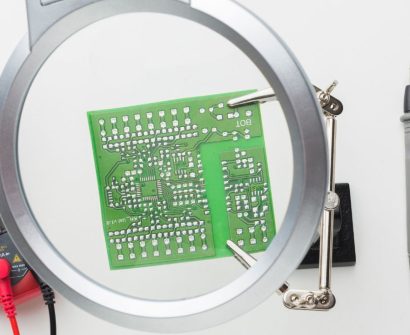
The semiconductor industry is a cornerstone of modern technology, powering everything from smartphones to advanced AI systems. As demand for semiconductors grows, governments worldwide have recognized their strategic importance and are implementing policies to bolster domestic semiconductor ecosystems. Subsidies, tax incentives, and R&D funding have emerged as key tools in this global race to secure semiconductor leadership.
1. The Importance of Government Policies in the Semiconductor Sector
Semiconductors are not just an economic driver but also a critical component of national security. Countries are striving to reduce dependence on foreign chipmakers by developing local manufacturing capabilities. Government policies play a vital role in this effort by:
- Reducing Capital Barriers: Semiconductor manufacturing is capital-intensive, with costs to build and operate fabs running into billions of dollars. Subsidies and tax incentives lower entry barriers for companies.
- Encouraging Innovation: Investments in R&D funding foster breakthroughs in areas like smaller nodes, new materials, and advanced packaging.
- Boosting Competitiveness: Policies ensure that domestic companies can compete in a global market dominated by a few giants.
2. The US: The CHIPS and Science Act
The United States, a pioneer in semiconductor innovation, has introduced the CHIPS and Science Act to revitalize its semiconductor manufacturing base. Key aspects include:
- Subsidies and Incentives: $52 billion in subsidies for domestic chip production, aiming to attract global companies to set up fabs in the US.
- R&D Investments: $13 billion allocated for semiconductor R&D, focusing on advancing next-generation technologies.
- National Security: By reducing dependence on foreign-made chips, especially for defense and critical infrastructure, the US strengthens its strategic position.
The act has already influenced companies like Intel, TSMC, and Samsung to expand their US operations, creating thousands of high-skill jobs.
3. China: Aggressive Investment in Self-Sufficiency
China has taken a bold approach to achieving semiconductor self-reliance, with policies driven by its Made in China 2025 initiative. Key measures include:
- Massive Subsidies: Chinese firms receive billions in state funding to build fabs and acquire advanced technologies.
- Tax Breaks: Generous tax incentives, including up to a 10-year tax holiday for qualified semiconductor companies.
- Focus on R&D: The government is heavily funding R&D for advanced nodes and materials, aiming to close the gap with global leaders.
However, US-imposed export restrictions on critical technologies have posed challenges, pushing China to accelerate domestic innovation.
4. India: A New Entrant with Big Ambitions
India, recognizing the economic and strategic importance of semiconductors, has launched the India Semiconductor Mission (ISM) to create a robust semiconductor ecosystem. Highlights include:
- Subsidy Program: The government has announced a $10 billion package to support chip manufacturing and design.
- Incentives for Startups: A focus on fabless companies, offering financial and infrastructure support to encourage chip design innovations.
- Global Partnerships: India is collaborating with countries like the US and Japan to gain access to advanced technology and expertise.
India’s approach leverages its strengths in software and engineering talent, positioning it as a hub for semiconductor design and research.
5. The Way Forward: Lessons from Global Leaders
While policies vary by country, some common lessons can be drawn:
- Long-term Commitment: Semiconductor development requires sustained investment over decades.
- Holistic Ecosystems: Success involves not just manufacturing but also R&D, talent development, and supply chain resilience.
- Global Collaboration: No single country can dominate every aspect of the semiconductor value chain; partnerships are essential.
Conclusion
Government policies are reshaping the global semiconductor landscape, enabling nations to secure their share in this critical industry. As the US, China, and India lead by example, other countries may follow suit, creating a more diversified and resilient semiconductor supply chain. The future of the industry will likely be shaped by a blend of strategic government intervention and private sector innovation.
Governments that invest wisely today will not only gain economic benefits but also secure a strategic advantage in the technology-driven world of tomorrow.







